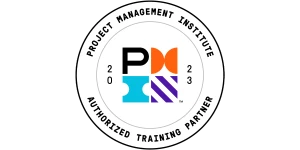The Basics of Business Process Management
The key to efficiency in any business or organization is its processes. By processes, we mean the steps and actions that must occur for a particular outcome to be achieved. When those processes go wrong, occur too slowly, or simply don’t work, the business or organization does not succeed.
Just as processes are the heart of every business or organization, business process management (BPM) is the heart of making those processes work efficiently. Understanding the basics of BPM is the first step in learning how the concept can transform your business.
BPM applications
Business process management is generally described in terms of three different levels of application:
• Software
• Suite
• System
Each level brings the concept of BPM to bear in a different way, expanding in depth and breadth of BPM as it spreads further and further throughout an organization. Let’s take a look at each level in turn.
Software
This level uses software tools to improve business processes. It allows the business to automate processes, execute them more efficiently, and monitor progress toward the desired outcome. BPM software brought a dramatic shift to process management because for the first time, information could flow freely between applications as well as between applications and people.
BPM software is generally used for simple, uncomplicated processes within a single group or department. It automates manual processes and streamlines inefficient processes, while allowing comprehensive tracking and analysis of execution. This information can be used for audit purposes and as a driver for continuous process improvement.
Suite
This level allows a business to apply BPM practices across multiple departments or groups. Because most processes inevitably cross departmental lines at some point, BPM improves efficiency and performance by streamlining inter-departmental connections.
Through the use of a work portal, multiple users can contribute to the process by sharing knowledge, task management, documents and more.
A BPM suite is generally used to help a business build composite applications that quickly and easily allow all users to view a process from start to finish, regardless of where they touch or affect that process.
System
This is the highest level of BPM application, designed to apply process management concepts across all aspects of an organization. It is a management practice that allows a business to use BPM concepts as a way to focus expertise, improve business structures or culture, and manage activities in a comprehensive manner.
A BPM system takes a holistic view of the organization and helps to bring structure and consistency to process management. The focus is not just on software and IT applications, but also on the organization’s overall practices, policies and methods of operation.
Solving business problems
Put simply, BPM solves business problems by improving business processes. This is done using a four step method:
• Map an existing process or design a new process
• Execute the process by making the most of people and applications
• Manage the process by managing information flow as well as specific actions and activities
• Analyze performance and metrics to feed continuous process improvement
Let’s look at a practical example of how BPM solves business problems.
Practical application
Consider the case of a small retailer that consistently receives complaints from customers regarding poor customer service. With a bit of investigation she discovers that employees are not receiving the training they need to be knowledgeable about the most in-demand products. To solve this problem she takes a BPM approach.
The first step is to map the training process. With input from employees, she creates a flow chart that shows how product information flows into the store and is disseminated to employees. The mapping exercise shows that product training is conducted on the sales floor at the beginning of each shift. Training time is short and because it takes place right on the sales floor, sessions are often interrupted to take care of customers.
The retailer decides to improve the process by conducting training in the back conference room fifteen minutes before employees are due on the sales floor. She assigns a floor supervisor to run the training sessions and collect feedback from employees on how well it works.
At the end of two weeks, she analyzes the sales performance and notes it has improved dramatically. She also notes that employees feel they are better informed than before, but would still like periodic opportunities for more in-depth training, especially when new products are introduced. This analysis prompts her to introduce monthly two-hour training sessions that feature product demonstrations and interaction from manufacturer representatives.
This is a simplistic example of business process management, but it effectively illustrates the basic steps that make up BPM, whether at a software, suite or system level.
Summary
Business process management allows a business or organization to improve and streamline processes to increase efficiency, improve performance, and boost profitability. It can be applied to a single process, to single or multiple processes that cross departmental lines, or to overall business management practices. The results can transform a business from just good enough to peak performance – all by paying attention to processes.
Author: Peter Peterka Google
Published 09/3/2008
SixSigma.us offers both Live Virtual classes as well as Online Self-Paced training. Most option includes access to the same great Master Black Belt instructors that teach our World Class in-person sessions. Sign-up today!
Virtual Classroom Training Programs Self-Paced Online Training Programs






